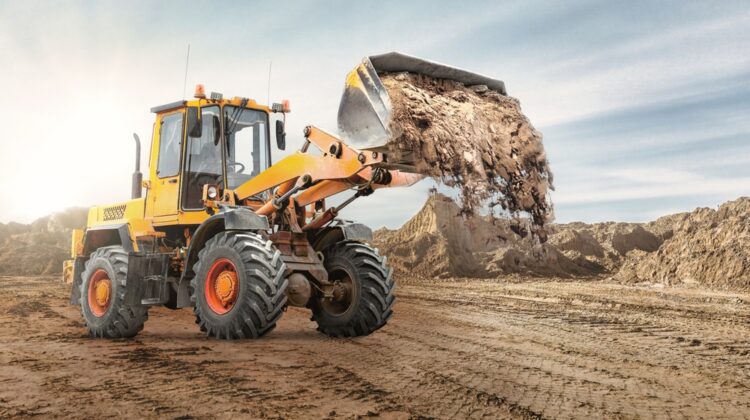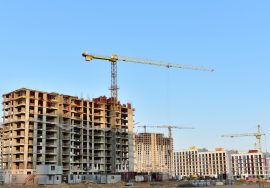
Clean Construction Technology for Sustainable Building
Clean Construction Technology: Transforming the Future of Sustainable Building
As the global construction industry faces rising pressure to reduce pollution, improve efficiency, and embrace sustainability, clean construction technology is emerging as a powerful solution. These technologies minimise environmental impact, reduce emissions, and support safer, smarter building practices. Today, the widespread adoption of clean construction technology is essential for achieving eco-friendly growth and meeting climate commitments.
What Is Clean Construction Technology?
Clean construction technology includes advanced tools, materials, and processes designed to lower environmental impact during construction. This includes reducing dust, noise, emissions, and waste, while improving energy efficiency and safety on-site. From electric machinery to digital planning tools, clean technologies make construction faster, greener, and more precise.
Key Types of Clean Construction Technology
1. Electric and Hybrid Machinery
Diesel-powered machines are major contributors to carbon emissions. Switching to electric or hybrid excavators, loaders, and cranes significantly reduces pollution. This shift plays a crucial role in expanding the use of clean construction technology across modern project sites.
2. Dust Control and Air Filtration Systems
Dust suppression systems, such as mist cannons and advanced filtration units, reduce air pollution. These systems help maintain cleaner surroundings and improve worker safety.
3. Prefabrication and Modular Construction
Modular building methods minimise material waste, reduce on-site pollution, and speed up construction timelines. They are one of the most efficient forms of clean construction , promoting sustainability and precision.
4. Digital Tools and Automation
Building Information Modelling (BIM), drones, and AI-based project management tools enhance accuracy and reduce errors. This leads to fewer reworks and less waste, supporting the broader adoption of clean construction.
5. Renewable Energy-Powered Construction Sites
Solar-powered generators and hybrid power storage systems reduce reliance on diesel and lower emissions significantly.
For more insights on India’s initiatives that promote clean and efficient technologies, you may refer to the Bureau of Energy Efficiency.
Benefits of Clean Construction Technology
Reduced Environmental Impact
Using clean construction helps limit air, water, and soil pollution during construction. It directly reduces carbon emissions and promotes healthier communities.
Lower Energy Consumption
Electric machinery, digital planning, and renewable energy systems cut operational energy use and help reduce long-term costs.
Enhanced On-Site Safety
Cleaner equipment and automated tools reduce workplace hazards and improve overall safety conditions.
Improved Project Efficiency
With precision planning and advanced tools, clean construction helps minimise delays, reduce wastage, and enhance productivity.

Applications of Clean Construction Technology in Modern Projects
Urban Infrastructure Development
Smart cities and large-scale infrastructure projects increasingly rely on clean construction to maintain low emissions and meet sustainability benchmarks.
Residential and Commercial Buildings
Developers are using prefabricated components, energy-efficient machines, and low-emission materials to build eco-friendly structures faster.
Industrial Construction
Factories and warehouses benefit from automated construction systems and electric machinery that reduce noise and pollution.
Clean Construction Technology and India’s Green Vision
India’s rapid urbanisation increases the need for cleaner, more responsible construction. Government programs promoting energy efficiency, such as BEE standards and Smart Cities Mission, encourage the use of clean construction to reduce pollution and improve operational efficiency.
Builders, consultants, and project developers looking for support or guidance can reach out through the official contact page:
Best Practices for Implementing Clean Construction Technology
Choose Low-Emission Machinery
Opt for electric or hybrid equipment over conventional diesel machines.
Adopt Modular and Prefab Methods
This reduces waste, saves time, and improves quality control.
Use Renewable Energy Sources
Solar generators and hybrid power systems reduce carbon emissions on-site.
Integrate Digital Planning Tools
BIM, drones, and AI assist in optimising planning and reducing costly errors.
Final Thoughts
Clean construction is redefining the future of sustainable development. By integrating low-emission machinery, digital tools, prefabrication, and renewable energy, the industry can drastically reduce its environmental impact. As India continues to embrace modern, eco-friendly building practices, clean technologies will play a central role in creating smarter, greener, and more resilient structures.
Read more related articles to enhance your knowledge and make informed decisions
Cost-Effective Modular Construction: Fast, and Sustainable Building Solutions
Smart Modular Buildings: Innovative, Efficient, and Sustainable Construction








